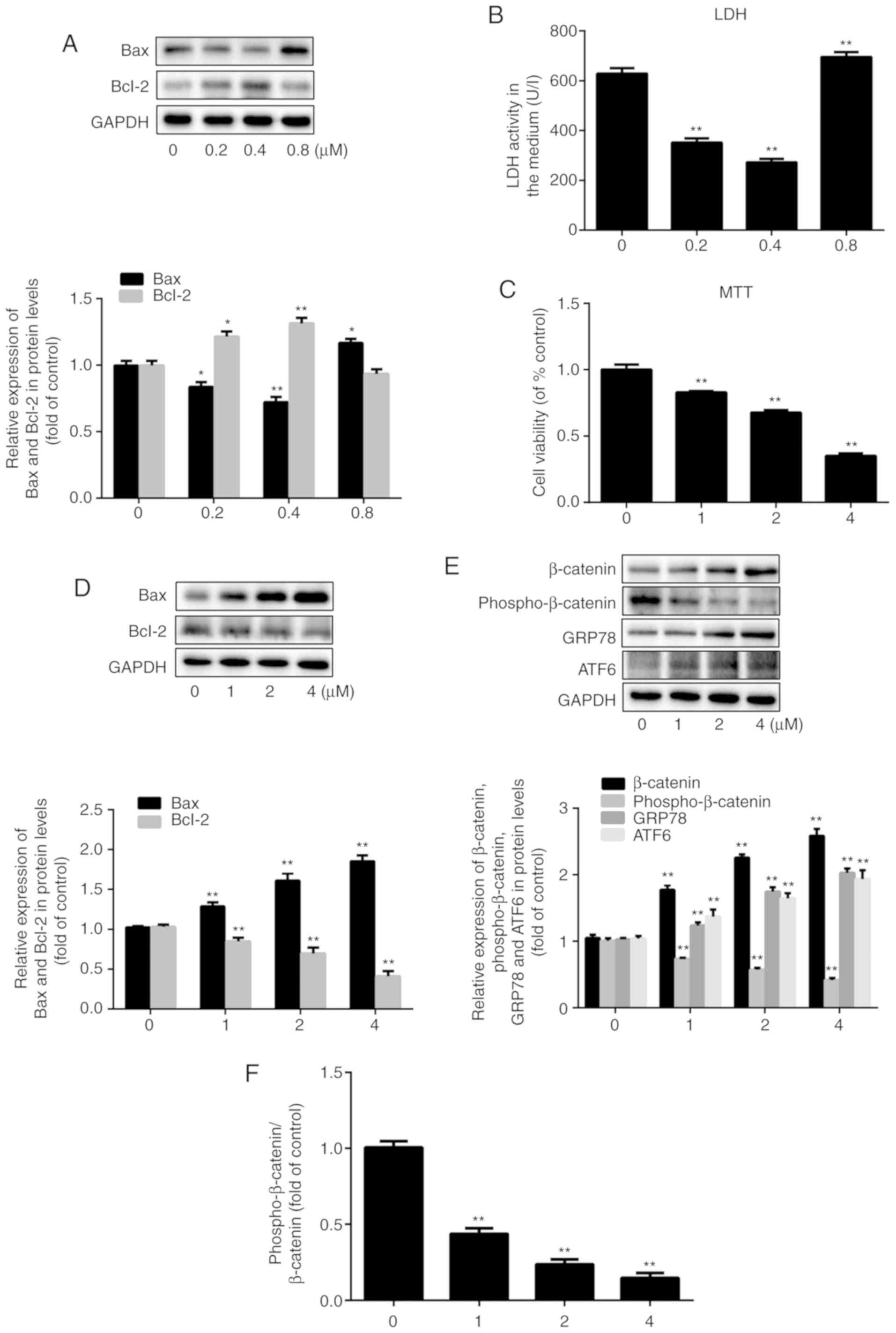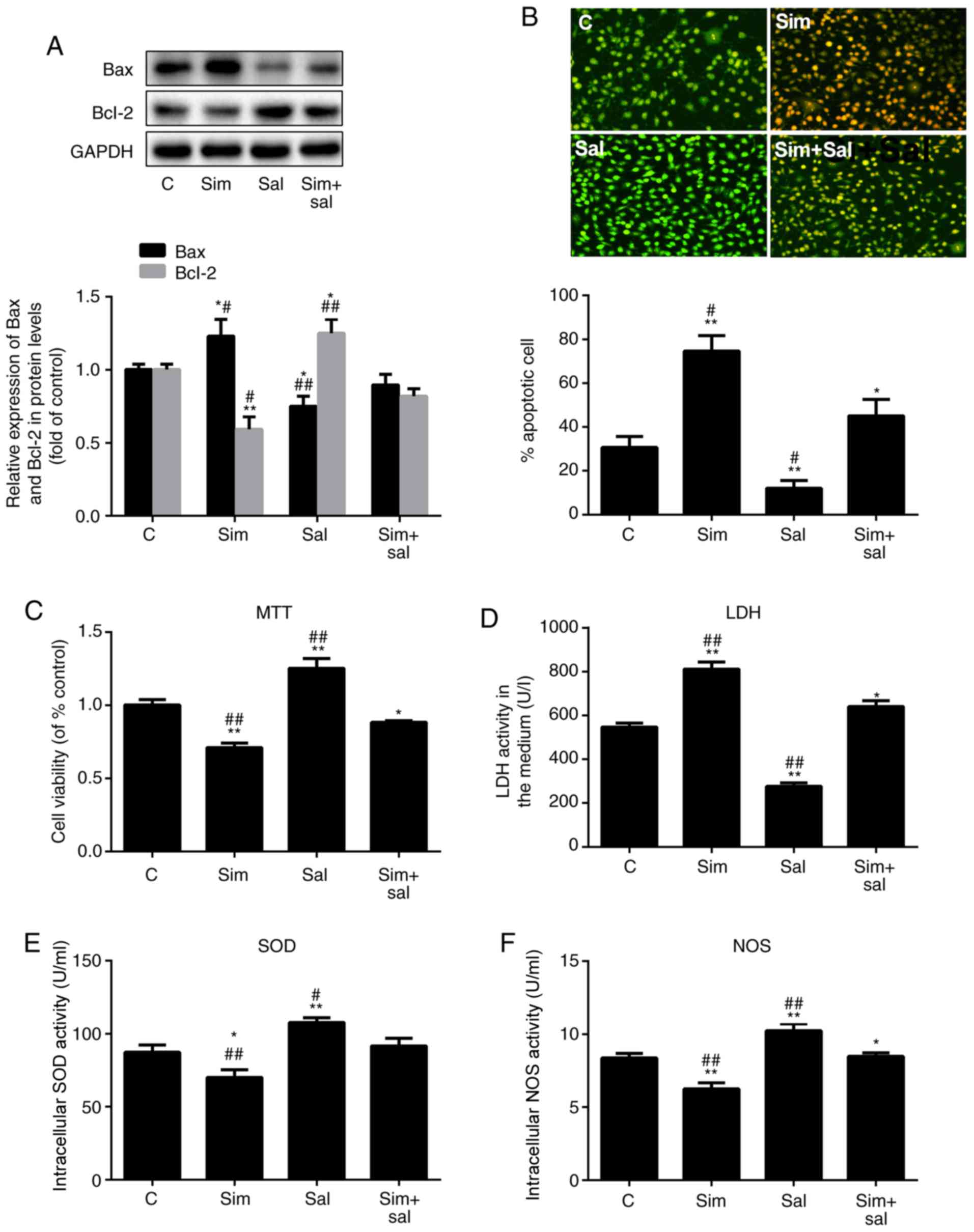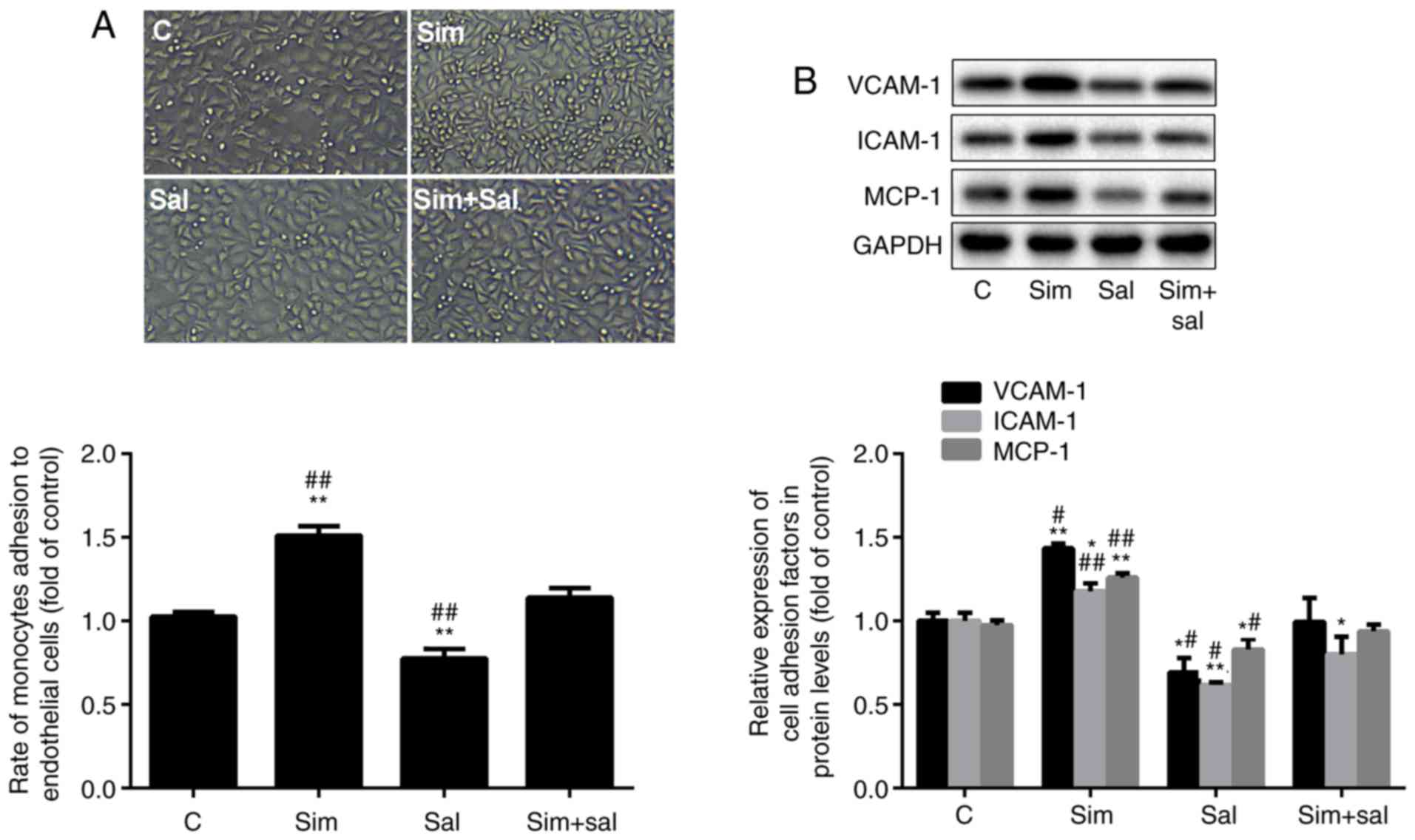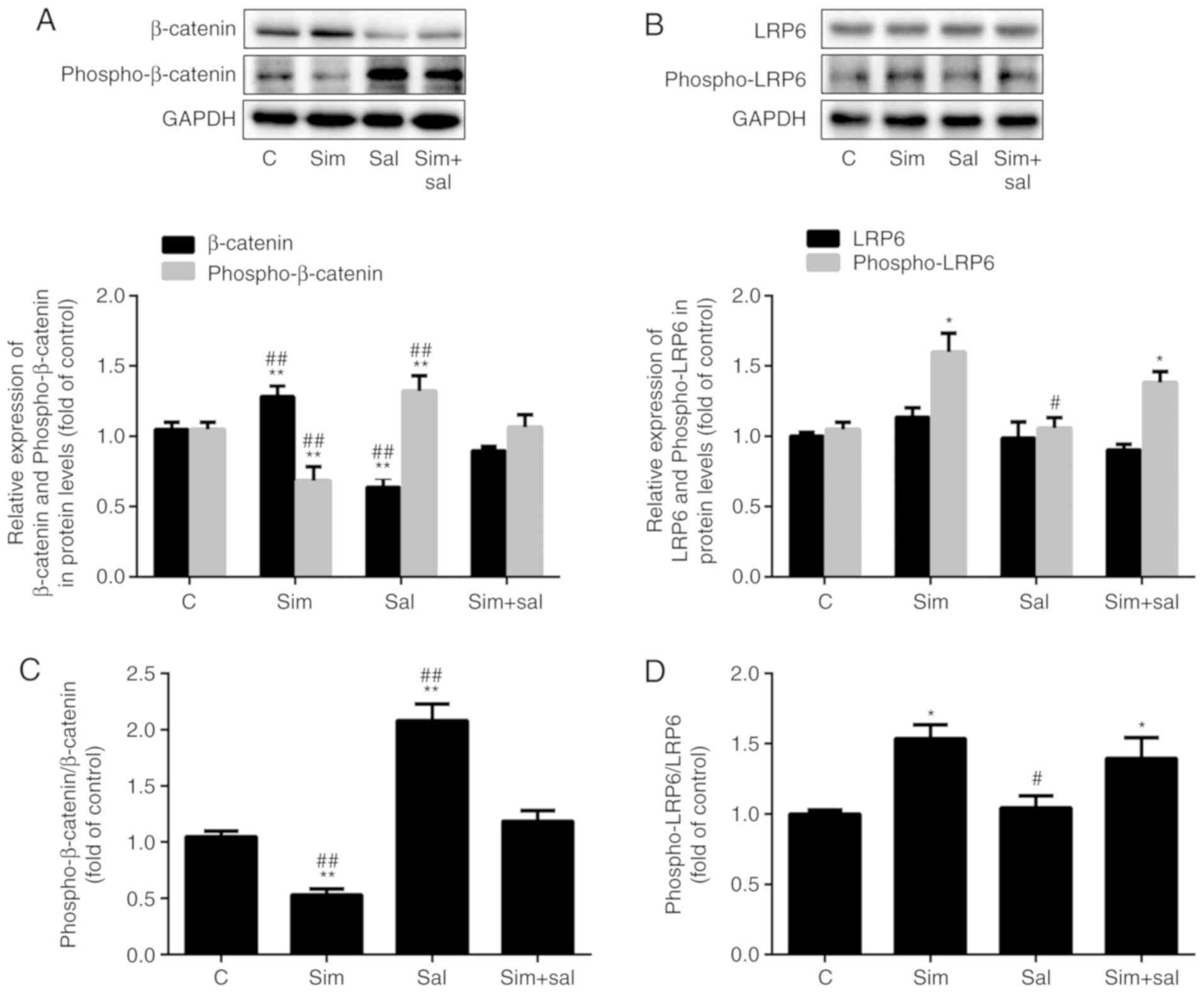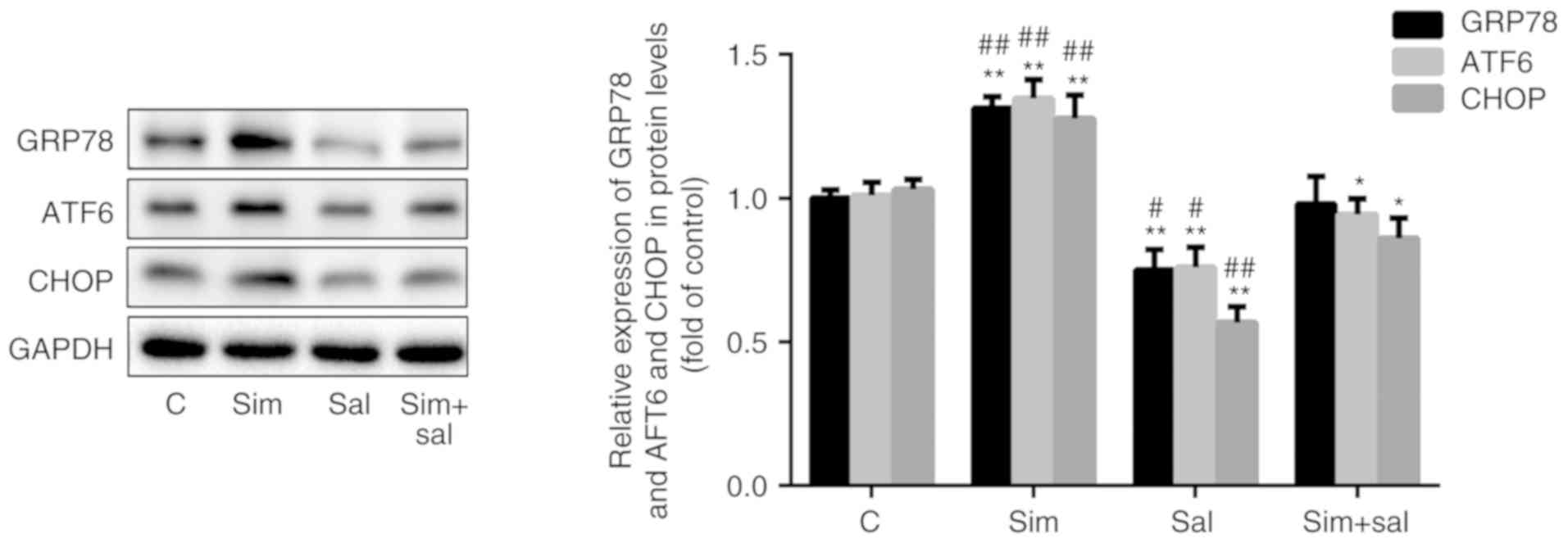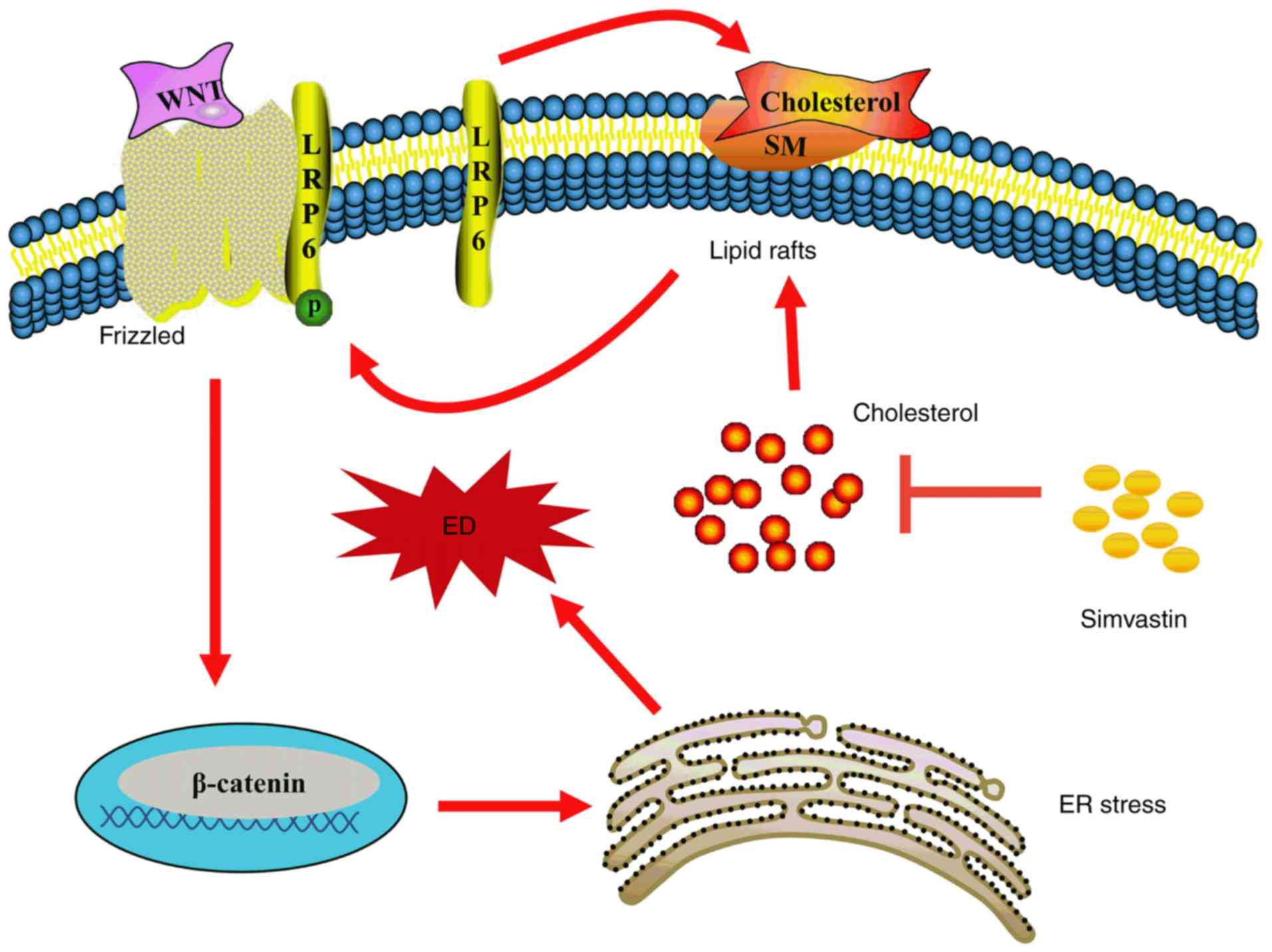|
1
|
Frostegård J: Immunity, atherosclerosis
and cardiovascular disease. BMC Med. 11:1172013. View Article : Google Scholar : PubMed/NCBI
|
|
2
|
Shah P, Bajaj S, Virk H, Bikkina M and
Shamoon F: Rapid progression of coronary atherosclerosis: A review.
Thrombosis. 2015:6349832015. View Article : Google Scholar
|
|
3
|
Kerr GE, Young JC, Horvay K, Abud HE and
Loveland KL: Regulated Wnt/beta-catenin signaling sustains adult
spermatogenesis in mice. Biol Reprod. 90:32014. View Article : Google Scholar
|
|
4
|
Clevers H and Nusse R: Wnt/β-catenin
signaling and disease. Cell. 149:1192–1205. 2012. View Article : Google Scholar : PubMed/NCBI
|
|
5
|
Polakis P: Drugging Wnt signalling in
cancer. EMBO J. 31:2737–2746. 2012. View Article : Google Scholar : PubMed/NCBI
|
|
6
|
Gelfand BD, Meller J, Pryor AW, Kahn M,
Bortz PD, Wamhoff BR and Blackman BR: Hemodynamic activation of
beta-catenin and T-cell-specific transcription factor signaling in
vascular endothelium regulates fibronectin expression. Arterioscler
Thromb Vasc Biol. 31:1625–1633. 2011. View Article : Google Scholar : PubMed/NCBI
|
|
7
|
Ueland T, Otterdal K, Lekva T, Halvorsen
B, Gabrielsen A, Sandberg WJ, Paulsson-Berne G, Pedersen TM,
Folkersen L, Gullestad L, et al: Dickkopf-1 enhances inflammatory
interaction between platelets and endothelial cells and shows
increased expression in atherosclerosis. Arterioscler Thromb Vasc
Biol. 29:1228–1234. 2009. View Article : Google Scholar : PubMed/NCBI
|
|
8
|
Tsaousi A, Mill C and George SJ: The Wnt
pathways in vascular disease: Lessons from vascular development.
Curr Opin Lipidol. 22:350–357. 2011. View Article : Google Scholar : PubMed/NCBI
|
|
9
|
Zerlin M, Julius MA and Kitajewski J:
Wnt/Frizzled signaling in angiogenesis. Angiogenesis. 11:63–69.
2008. View Article : Google Scholar : PubMed/NCBI
|
|
10
|
Zhang P, Hua L, Hou H, Du X, He Z, Liu M,
Hu X and Yan N: Sphingomyelin synthase 2 promotes
H2O2-induced endothelial dysfunction by
activating the Wnt/β-catenin signaling pathway. Int J Mol Med.
42:3344–3354. 2018.PubMed/NCBI
|
|
11
|
Shinozaki S, Chiba T, Kokame K, Miyata T,
Kaneko E and Shimokado K: A deficiency of Herp, an endoplasmic
reticulum stress protein, suppresses atherosclerosis in ApoE
knockout mice by attenuating inflammatory responses. PLoS One.
8:e752492013. View Article : Google Scholar : PubMed/NCBI
|
|
12
|
Sozen E, Karademir B and Ozer NK: Basic
mechanisms in endoplasmic reticulum stress and relation to
cardiovascular diseases. Free Radic Biol Med. 78:30–41. 2015.
View Article : Google Scholar
|
|
13
|
Huang A, Patel S, McAlpine CS and Werstuck
GH: The role of endoplasmic reticulum stress-glycogen synthase
kinase-3 signaling in atherogenesis. Int J Mol Sci. 19:E16072018.
View Article : Google Scholar : PubMed/NCBI
|
|
14
|
Halleskog C, Mulder J, Dahlström J, Mackie
K, Schulte G, Hortobágyi T, Tanila H, Kumar Puli L, Färber K and
Harkany T: WNT signaling in activated microglia is proinflammatory.
Glia. 59:119–131. 2011. View Article : Google Scholar
|
|
15
|
Amodio G, Moltedo O, Faraonio R and
Remondelli P: Targeting the endoplasmic reticulum unfolded protein
response to counteract the oxidative stress-induced endothelial
dysfunction. Oxid Med Cell Longev. 2018:49462892018. View Article : Google Scholar : PubMed/NCBI
|
|
16
|
Hong J, Kim K, Park E, Lee J, Markofski
MM, Marrelli SP and Park Y: Exercise ameliorates endoplasmic
reticulum stress-mediated vascular dysfunction in mesenteric
arteries in atherosclerosis. Sci Rep. 8:79382018. View Article : Google Scholar : PubMed/NCBI
|
|
17
|
Garshick M and Underberg JA: The use of
primary prevention statin therapy in those predisposed to
atherosclerosis. Curr Atheroscler Rep. 19:482017. View Article : Google Scholar : PubMed/NCBI
|
|
18
|
Gao K, Shen Z, Yuan Y, Han D, Song C, Guo
Y and Mei X: Simvastatin inhibits neural cell apoptosis and
promotes loco-motor recovery via activation of Wnt/β-catenin
signaling pathway after spinal cord injury. J Neurochem.
138:139–149. 2016. View Article : Google Scholar :
|
|
19
|
Robin NC, Agoston Z, Biechele TL, James
RG, Berndt JD and Moon RT: Simvastatin promotes adult hippocampal
neurogenesis by enhancing Wnt/β-catenin signaling. Stem Cell
Reports. 2:9–17. 2013. View Article : Google Scholar
|
|
20
|
Duan J, Yu Y, Li Y, Yu Y, Li Y, Zhou X,
Huang P and Sun Z: Toxic effect of silica nanoparticles on
endothelial cells through DNA damage response via Chk1-dependent
G2/M checkpoint. PLoS One. 8:e620872013. View Article : Google Scholar : PubMed/NCBI
|
|
21
|
Valenta T, Hausmann G and Basler K: The
many faces and functions of β-catenin. EMBO J. 31:2714–2736. 2012.
View Article : Google Scholar : PubMed/NCBI
|
|
22
|
Li Y, Qin X, Li P, Zhang H, Lin T, Miao Z
and Ma S: Isobavachalcone isolated from Psoralea corylifolia
inhibits cell proliferation and induces apoptosis via inhibiting
the AKT/GSK-3β/β-catenin pathway in colorectal cancer cells. Drug
Des Devel Ther. 13:1449–1460. 2019. View Article : Google Scholar :
|
|
23
|
Wang LR, Kim SH and Baek SS: Effects of
treadmill exercise on the anxiety-like behavior through modulation
of GSK3β/β-catenin signaling in the maternal separation rat pup. J
Exerc Rehabil. 15:206–212. 2019. View Article : Google Scholar : PubMed/NCBI
|
|
24
|
Duvetorp A, Olsen RS, Nyström H, Skarstedt
M, Dienus O, Mrowietz U, Söderman J and Seifert O: Expression of
low-density lipoprotein-related receptors 5 and 6 (LRP5/6) in
psoriasis skin. Exp Dermatol. 26:1033–1038. 2017. View Article : Google Scholar : PubMed/NCBI
|
|
25
|
Harisa GI, Alomrani AH and Badran MM:
Simvastatin-loaded nanostructured lipid carriers attenuate the
atherogenic risk of erythrocytes in hyperlipidemic rats. Eur J
Pharm Sci. 96:62–71. 2017. View Article : Google Scholar
|
|
26
|
Yu X, Yan N, Li Z, Hua Y and Chen W: FGF19
sustains the high proliferative ability of keratinocytes in
psoriasis through the regulation of Wnt/GSK-3β/β-catenin signaling
via FGFR4. Clin Exp Pharmacol Physiol. 46:761–769. 2019. View Article : Google Scholar : PubMed/NCBI
|
|
27
|
Chung CL, Wang SW, Sun WC, Shu CW, Kao YC,
Shiao MS and Chen CL: Sorafenib suppresses TGF-β responses by
inducing caveolae/lipid raft-mediated internalization/degradation
of cell-surface type II TGF-β receptors: Implications in
development of effective adjunctive therapy for hepatocellular
carcinoma. Biochem Pharmacol. 154:39–53. 2018. View Article : Google Scholar : PubMed/NCBI
|
|
28
|
Özhan G, Sezgin E, Wehner D, Pfister AS,
Kühl SJ, Kagermeier- Schenk B, Kühl M, Schwille P and Weidinger G:
Lypd6 enhances Wnt/β-catenin signaling by promoting Lrp6
phosphorylation in raft plasma membrane domains. Dev Cell.
26:331–345. 2013. View Article : Google Scholar
|
|
29
|
Li Z, Yang Y, Gao Y, Wu X, Yang X, Zhu Y,
Yang H, Wu L, Yang C and Song L: Elevated expression of flotillin-1
is associated with lymph node metastasis and poor prognosis in
early-stage cervical cancer. Am J Cancer Res. 6:38–50. 2015.
|
|
30
|
Haack F, Lemcke H, Ewald R, Rharass T and
Uhrmacher AM: Spatio-temporal model of endogenous ROS and
raft-dependent WNT/beta-catenin signaling driving cell fate
commitment in human neural progenitor cells. PLoS Comput Biol.
11:e10041062015. View Article : Google Scholar : PubMed/NCBI
|
|
31
|
Badana AK, Chintala M, Gavara MM, Naik S,
Kumari S, Kappala VR, Iska BR and Malla RR: Lipid rafts disruption
induces apoptosis by attenuating expression of LRP6 and survivin in
triple negative breast cancer. Biomed Pharmacother. 97:359–368.
2018. View Article : Google Scholar
|
|
32
|
Cao L, Lei H, Chang MZ, Liu ZQ and Bie XH:
Down-regulation of 14-3-3β exerts anti-cancer effects through
inducing ER stress in human glioma U87 cells: Involvement of
CHOP-Wnt pathway. Biochem Biophys Res Commun. 462:389–395. 2015.
View Article : Google Scholar : PubMed/NCBI
|
|
33
|
Jia X, Chen Y, Zhao X, Lv C and Yan J:
Oncolytic vaccinia virus inhibits human hepatocellular carcinoma
MHCC97-H cell proliferation via endoplasmic reticulum stress,
autophagy and Wnt pathways. J Gene Med. 18:211–219. 2016.
View Article : Google Scholar : PubMed/NCBI
|
|
34
|
He Z, He X, Liu M, Hua L, Wang T, Liu Q,
Chen L and Yan N: Simvastatin attenuates
H2O2-induced endothelial cell dysfunction by
reducing endoplasmic reticulum stress. Molecules. 24:E17822019.
View Article : Google Scholar
|
|
35
|
Sun H, Wang X, Liu K, Guo M, Zhang Y, Ying
QL and Ye S: β-catenin coordinates with Jup and the TCF1/GATA6 axis
to regulate human embryonic stem cell fate. Dev Biol. 431:272–281.
2017. View Article : Google Scholar : PubMed/NCBI
|
|
36
|
Kim J, Kim J, Kim DW, Ha Y, Ihm MH, Kim H,
Song K and Lee I: Wnt5a induces endothelial inflammation via
beta-catenin-independent signaling. J Immunol. 185:1274–1282. 2010.
View Article : Google Scholar : PubMed/NCBI
|
|
37
|
Vikram A, Kim YR, Kumar S, Naqvi A,
Hoffman TA, Kumar A, Miller FJ Jr, Kim CS and Irani K: Canonical
Wnt signaling induces vascular endothelial dysfunction via p66 Shc
-regulated reactive oxygen species. Arterioscler Thromb Vasc Biol.
34:2301–2309. 2014. View Article : Google Scholar : PubMed/NCBI
|
|
38
|
Martinez-Font E, Felipe-Abrio I,
Calabuig-Fariñas S, Ramos R, Terrasa J, Vögler O, Alemany R,
Martín-Broto J and Obrador- Hevia A: Disruption of TCF/β-catenin
binding impairs Wnt signaling and induces apoptosis in soft tissue
sarcoma cells. Mol Cancer Ther. 16:1166–1176. 2017. View Article : Google Scholar : PubMed/NCBI
|
|
39
|
Zhang Z, Wu S, Muhammad S, Ren Q and Sun
C: miR-103/107 promote ER stress mediated apoptosis via targeting
the Wnt3a/β-catenin/ATF6 pathway in preadipocytes. J Lipid Res.
59:843–853. 2018. View Article : Google Scholar : PubMed/NCBI
|
|
40
|
Karlson BW, Palmer MK, Nicholls SJ,
Lundman P and Barter PJ: Doses of rosuvastatin, atorvastatin and
simvastatin that induce equal reductions in LDL-C and non-HDL-C:
Results from the VOYAGER meta-analysis. Eur J Prev Cardiol.
23:744–747. 2016. View Article : Google Scholar
|
|
41
|
Barale C, Frascaroli C, Cavalot F and
Russo I: Hypercholesterolemia impairs the Glucagon-like peptide 1
action on platelets: Effects of a lipid-lowering treatment with
simvastatin. Thromb Res. 180:74–85. 2019. View Article : Google Scholar : PubMed/NCBI
|



